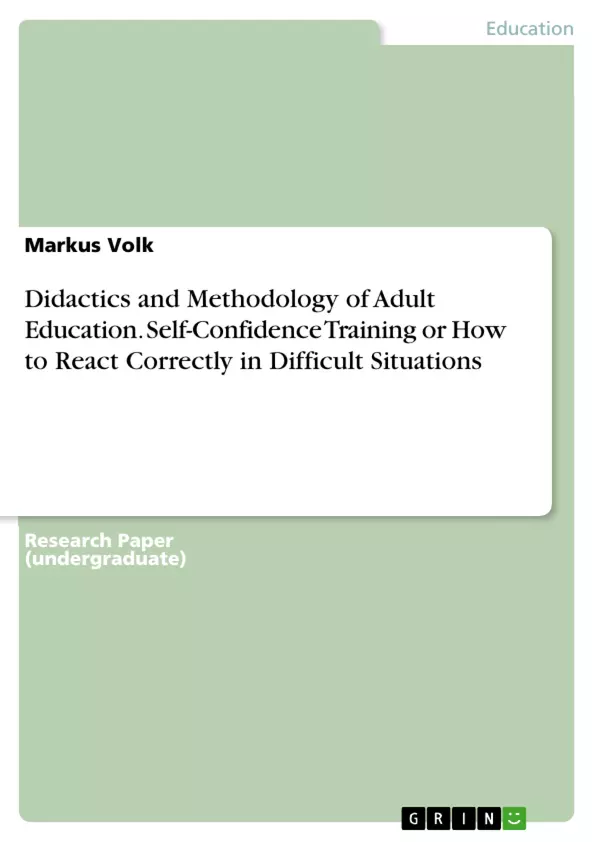Communication on different levels (incl. the four ears model) is dealt with and a seminar planning for an exemplary self-confidence training is carried out.
Possible target groups and their differences and requirements are discussed.
Didactic design and organizational pedagogy will be related. The use of media in connection with different action situations and action patterns are discussed.
Another task deals with self-confidence training. Here, one learns how to react to crises, stress factors and exposed situations in the best possible way.
The last two tasks explain the concept of organizational pedagogy, didactic design and show how to apply this knowledge in typical action situations.
Inhaltsverzeichnis (Table of Contents)
- Task 1:
- a) "I don't like the exercise."
- b) "Please do me a favor and join in now."
- c) "Ms. Müller, we're out of coffee."
- Task 2:
- Seminar "Self-confidence training"
- Target group definition
- Objectives
- Expectations
- Form and framework
- Concept
- Posture of the seminar leader
- Scheduling
- Methodologies
- Risk factors
- Task 3:
- Task 4:
- Example blackboard
- Example pin board
- Example worksheet
- Literature
Zielsetzung und Themenschwerpunkte (Objectives and Key Themes)
This text aims to explore the four-ear model of communication, as developed by Schulz von Thun, and its practical application in different communication scenarios. The text also offers a didactic plan for conducting a seminar on self-confidence training for professionals, outlining the target group, objectives, expectations, and considerations for effective seminar delivery.
- The four-ear model of communication and its components: factual content, self-revelation, relationship level, and appeal.
- The potential for miscommunication and conflict arising from the four-ear model.
- The role of perception, interpretation, and feeling in communication.
- Applying the four-ear model to specific communication scenarios.
- Developing and delivering a professional development seminar on self-confidence training.
Zusammenfassung der Kapitel (Chapter Summaries)
Task 1: This task introduces the four-ear model and illustrates its application through three communication scenarios. The model is explained, and each scenario is analyzed to demonstrate how the four levels of communication can be interpreted and understood in different ways.
Task 2: This task presents a didactic plan for conducting a seminar on self-confidence training for executives and aspiring professionals. The plan addresses the target group, objectives, expectations, and considerations for the seminar, including the seminar leader's attitude and approach.
Schlüsselwörter (Keywords)
The text focuses on the four-ear model of communication, self-confidence training, professional development, communication skills, and didactic planning.
- Quote paper
- Markus Volk (Author), 2015, Didactics and Methodology of Adult Education. Self-Confidence Training or How to React Correctly in Difficult Situations, Munich, GRIN Verlag, https://www.grin.com/document/1257674



